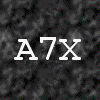Samba music is very heterogeneous and it's intricate to define. It is the outcome of a long simmering mix of separate tradition from the portuguese songs, african rhythms, and the fast paced indian ceremony approaching worldwide influences. In the start it was played only with drums and other bass beat instruments, but later the acoustic guitar and the small brazilian guitar cavaquinho was added.
The basic movement involves a straight body and a bending of one knee at a time. The feet move very slightly - only a few inches at a time. The rhythm is 2/4, with 3 steps per measure. It can be thought of as a step-ball-change. It can be described calling it and-a-one, and-a-two, then back to one. The basic movement is the same to either side, where one foot moves to the outside lifting up just before the first
beat, lifting on the "and-a" and replacing itself on the floor on the one beat (i. The right leg moves slightly to the right) and this leg is kept straight. The other foot moves slightly towards the front, and closer to the first foot.
The expression samba music is in brazil often associated with the carnival music in rio and to a small extent also sao paulo. There exist many variegated types of samba music rhythms and samba dances. Samba is on the whole a musical composition made with binary and syncopated rhythms. In addition to the basic samba rhythm, all categories of samba rhythms are usually mixed together.
Samba music is very diverse and it's difficult to define. It is the result of a long simmering mix of heritage from the portuguese songs, african rhythms, and the fast paced indian ceremony meeting global influences. In the beginning it was played only with drums and other bass beat instruments, but later the acoustic guitar and the small brazilian guitar cavaquinho was added. There exist many different types of samba rhythms and samba dances. Samba is on the whole a musical composition made with a syncopated and binary rhythm. In addition to this basic samba rhythm, all types of samba are put together. It is important to understand that what we in north america and europe call samba is often an umbrella-term that covers several different forms of samba like samba samba-reggae, afro, bloc, maracatu, baio etc. The phrase "samba" is in brazil often associated with the carnival in rio and to a lesser extent also sao paulo. Samba can be vigorous and harmonious at the same time. The oldest form of samba is partido alto.
Samba music is in 2/4 time (in two) with a high bass drum beat on the first beat, a lower foundation beat on the second beat, and highly syncopated rhythms played over the top. A bateria plays the rhythmical part, while melody instruments and singers play the tunes. The biggest and best known samba schools are located in the popular districts of rio de janeiro: imperatriz leopoldinense, mangueira, beija flor, portela, and viradouro. Samba can be performed by a single guitarist or a mob and there are a variety of. Or sub-styles. These include: batucada, maracatu, afoxè, samba reggae, forrè, pagode, samba de roda, samba cancao, and bossa nova. Samba is a way of life in brazil, and is gaining huge popularity throughout the world. The simple definition of batucada would be a percussion jam session, but that doesn't begin to describe the awesome power a tight ensemble is capable of producing. Percussion is the bare bones of samba, but the larger bateria (percussion group) ensembles within the samba schools make breathtakingly complex walls of sound.




